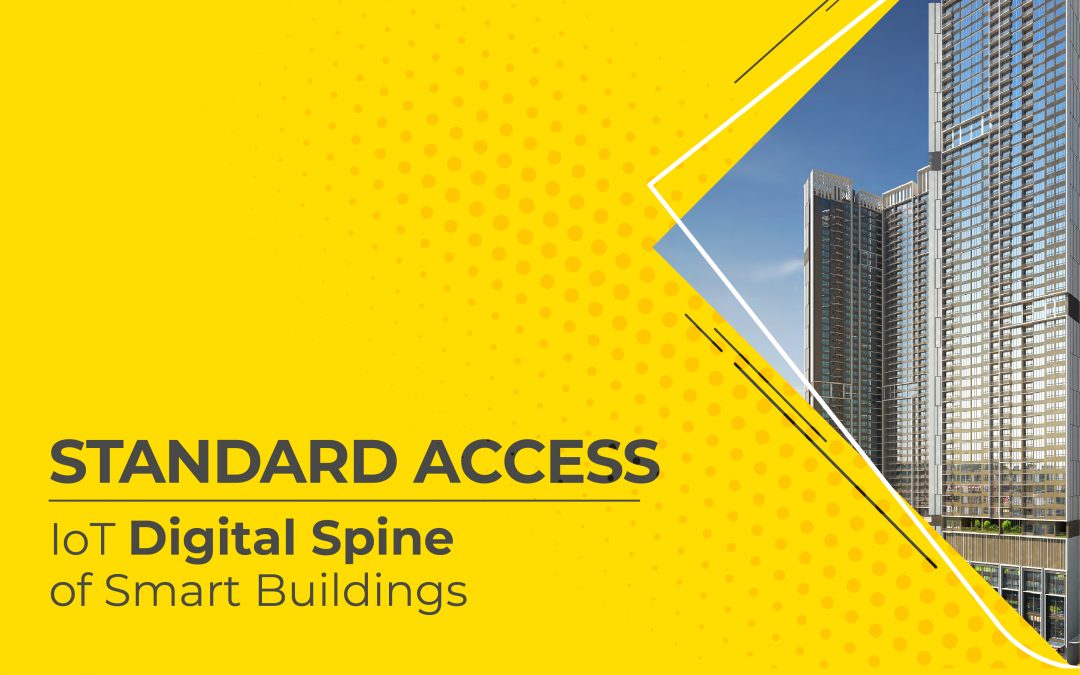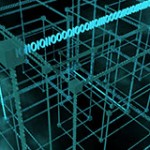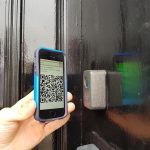Standard access is a sector leader in the area of AI for the development and the enabling of securely integrated IoT solutions across the real estate industry
~ Originally published on Medium: https://medium.com/@damien_60172/digital-spine-the-foundation-of-a-smart-building-29c84f512c36
In the early days, that meant automating facilities management for a more streamlined approach to asset management and optimising the tenant experience through a suite of solutions. This approach delivered high-tech solutions into low-tech environments in a way that proved affordable, user-friendly and, most importantly, scaleable. IoT sensors with AI analysis are now routinely used to translate data into meaningful metrics. For example, the monitoring of movement data to identify under-used space within the building opens up a whole new understanding of employee behaviour that can be analysed for a more informed and supportive office design.
Within a short number of years, the team at Standard Access had successfully developed an end-to-end smart building operating system. In 2020, key metrics moved beyond energy performance (including compliance checks), user comfort and space optimization, into pandemic-responsive solutions, for example, monitoring air quality and keeping a real-time headcount of people in a room or building at any given time. Compliance with social distancing and mask wearing are amongst the new features available to building owners and operators.
The anatomy of a truly ‘smart building’
New IoT solutions for smart buildings are emerging daily. While many are novelty-driven, others will likely become necessary over time. In simple terms, these IoT solutions are features of a smart building but, alone, they do not make a building smart and will often result in poor returns on investment. Too often, the valuable data generated from these sensors are held proprietarily by the solution vendors, which prevents building owners from using it effectively. More worryingly, the ad hoc installation of singular solutions can pose a very real threat to the security of a building. It is important for building owners and operators to understand the critical infrastructure enabling the ‘plug in’ of these new sensors and technologies, that is, the digital spine of the building.
Similar to a human spine, the digital spine of a building is the central support structure that keeps it upright and connects the different parts of the building to each other. And like the human spine, it must be flexible yet robust enough to withstand the weight of the ‘brain’. It also acts as the central nervous system, transmitting information from IoT sensors. Herein lies the power and the vulnerability of a smart building – talk to the expert team at Standard Access about secure data transmission at https://standardaccess.co.
The business case for smart buildings
Saving the planet. It’s a bold claim, but an accurate one. Carbon emissions from the built environment are responsible for almost 40 percent of global emissions. Being such a central part of the problem, real estate was always going to have to step up and be a big part of the solution when it comes to climate action. The obvious starting point is the elimination of waste; in a smart building, space scheduling systems and real-time personalised or zoned comfort controls provide simple yet effective cost, space and energy savings. Why is this important? In addition to helping to save the planet, this approach drives efficiencies within an organisation that are replicated across departments and functions to enhance the wellbeing of employees and reduce the environmental footprint of the building.
Also, as the thought leader behind #SpaceAsA Service (the trillion dollar hashtag) Antony Slumbers explains, no organisation wants an office, they want a productive workforce. Smart buildings have a huge role to play in the evolution and personalisation of the workplace of the future. Flexibility was already a trend to watch, however, since the outbreak of Covid-19, this is paramount.
Can any building be made ‘smart’?
‘Smart’ in the context of the built environment means connected, however, at Standard Access, we know from experience that data alone is not enough. This data must be analysed and interpreted in order to yield actionable insights about how buildings perform, which in turn influence decision-making in a way that is impactful. Safe data generation, integration and analysis renders any building smart.
*At the time of publication, the team at Standard Access are in the process of a funding round from a combination of Ireland, UK and US-based investors, which will accelerate expansion into new markets.
About Standard Access:
Established in 2014 by Damien Browne, Standard Access is the global leader in IoT digital spine secure data transmission for smart building technologies, providing solutions for contactless building access through the patented Sonic Handshake®, along with a suite of AI-enabled solutions for building owners/operators and their tenants. www.standardaccess.co






